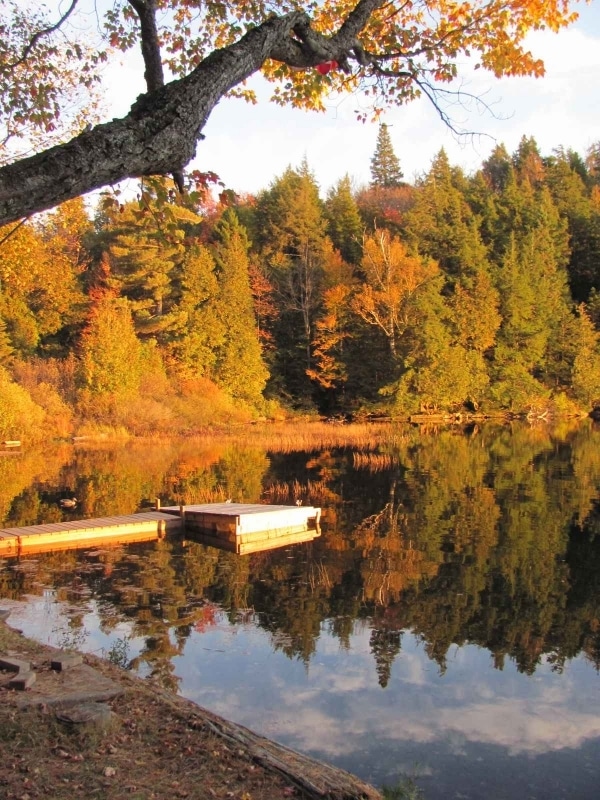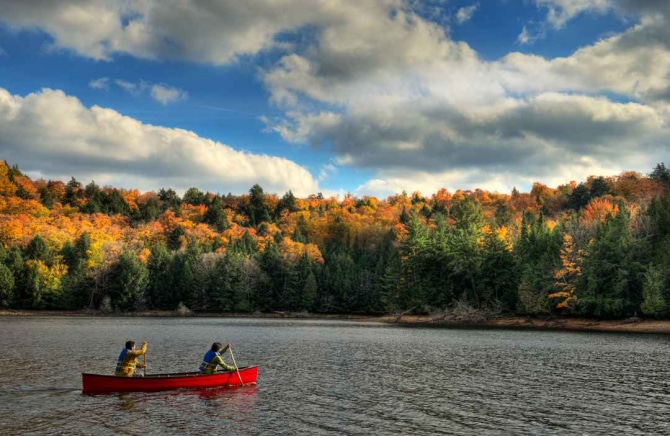It’s that time of year again, when children go back to school, the days are getting shorter, the nights chillier and the colours of our deciduous trees start to change. Many of Haliburton Forest’s visitors make a special point of timing one of their last visits before Winter to coincide with the height of the change in leaf colour – a spectacular display of vibrancy and natural opulence in shades of everything from bright yellows, fancy purples, vibrant reds and muted browns … and all that before the background of the various tints of green maintained by our conifers!
On a sunny Fall day, the height of the Autumn colours can be truly spectacular and breath-taking. Accordingly, tourists flock into central Ontario, which offers some of the most spectacular colour displays globally.
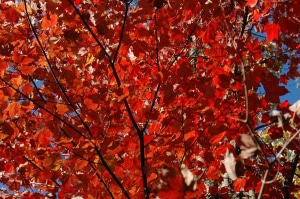
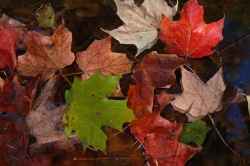
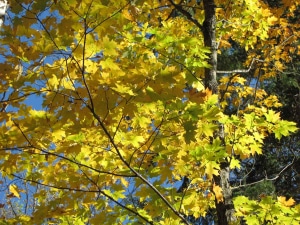
But let’s come back to our intial question: Why is this process more dramatic and the resulting colours more spectacular in Haliburton versus Guelph, Vancouver, Stockholm or Melbourne? Firstly our Fall weather is more dramatic, with a rather sudden change from Summer’s 30 degree days in August to the first frosts of October within a short six weeks. Also, the fact that frost is encountered at all, contributes to some of the vibrancy of our Autumn colours. However, the main reason is the diversity of our forests. In most other parts of the world, hardwood forests consist of only a handful of species, while we have 27 different species at Haliburton Forest, with 19 of these being hardwoods. Every one of these features a prominent, yet distinct colour, such as red maples their fabulous red, poplar and ash a bright yellow, sugar maples and basswoods tints of orange, and beech or oak shades of brown. Interspersed amid the hardwoods are the green softwoods, 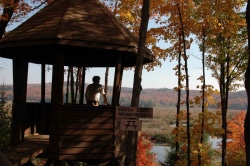
Visitors can experience the Fall colours at Haliburton Forest in many ways. If you only have a few hours of time, take one of the short hikes on some of the trails near basecamp. To see the colourful tree canopy up close, join us for a canopy tour. If you can stay multiple days, book one of the semi-wilderness campsites or one of our housekeeping units. Bring a canoe or kayak and enjoy the spectacular colours from land and water throughout different times of the day. And don’t forget your camera – the colourful leaves offer many photo opportunities, from fantastic landscape pictures to macro photos.
Check out our Fall colour gallery for more fall pictures.
Peter Schleifenbaum


